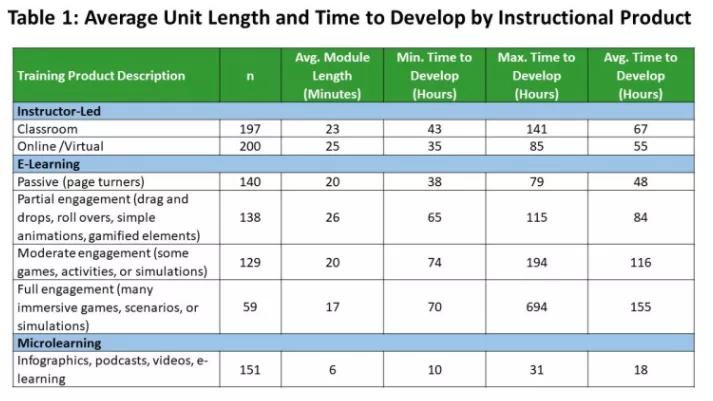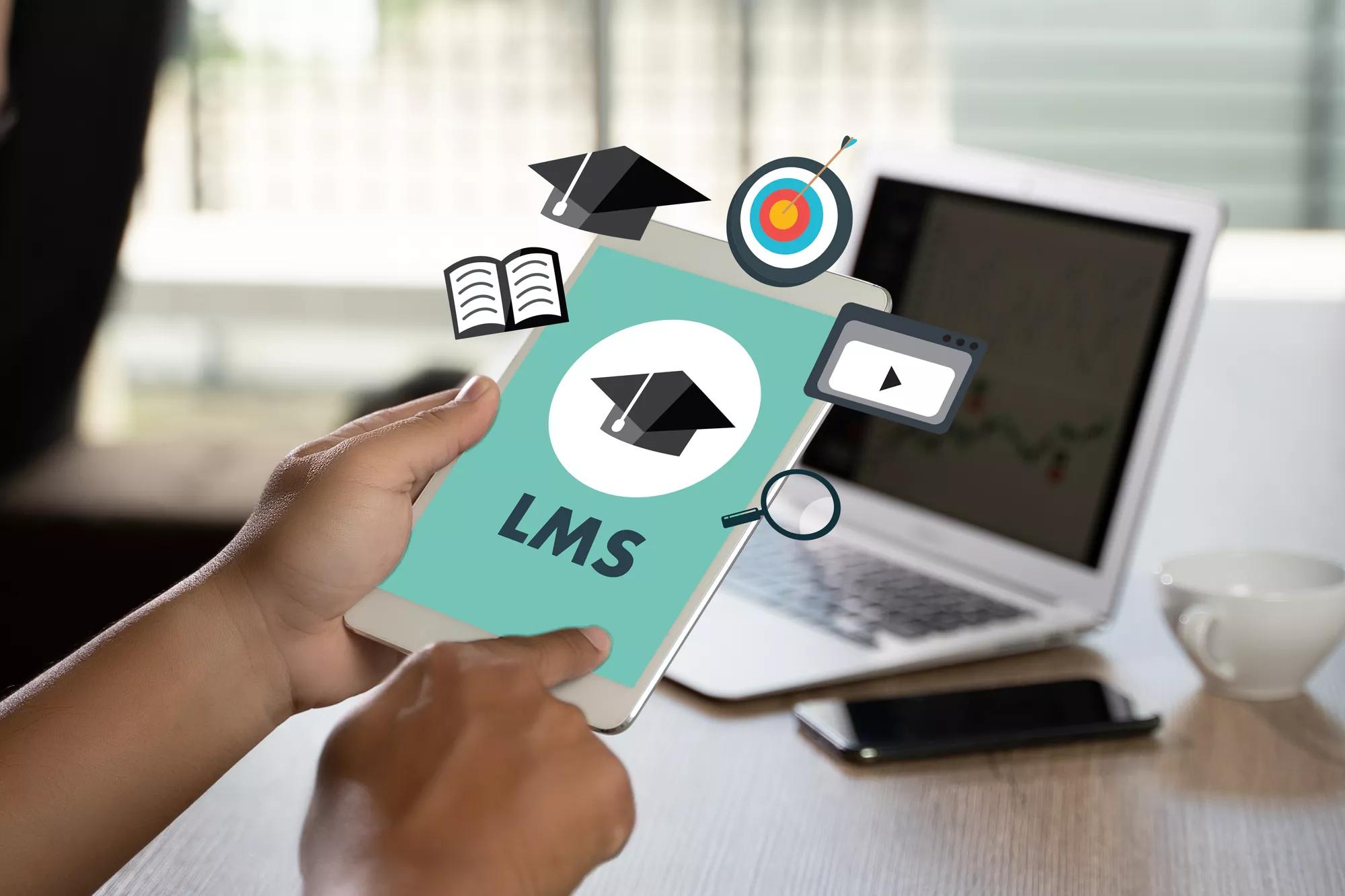What Is e-Learning?
E-learning is a structured course or learning experience delivered electronically; it can also include performance support content. There are also many different elements that can make up an e-learning program, such as live or pre-recorded lecture content, video, quizzes, simulations, games, activities, and other interactive elements. Keep in mind that you may also see the term e-learning more broadly as a catchall for any learning content delivered electronically. While ATD style uses a hyphen in the spelling, you may also see it spelled elearning or eLearning. E-learning courses are typically managed and administered via a learning management system (LMS). As author, Steven D. Foreman notes in his book, The LMS Guidebook, an learning management system is "a multiuser software application, usually accessed through a web browser. It helps organizations manage training events, self-paced courses, and blended learning programs. It provides automation that replaces rigorous and expensive manual work, saves time, and enables you to organize your content, data, and learners. It tracks and reports on training activity and results." The popularity of online learning continues to rise. According to ATD’s 2021 State of the Industry report, technology-based learning methods, including e-learning accounted for 80 percent of learning hours used in 2020.Broadly, e-learning falls into two main categories: asynchronous and synchronous.
Asynchronous E-Learning vs. Synchronous E-Learning
Asynchronous e-learning is self paced; the learners are taking the course on their own, usually on a laptop. Asynchronous e-learning programs may include pre-recorded lecture content and video, visuals, and/or text, knowledge quizzes, simulations, games, and other interactive elements. Synchronous e-learning, more commonly referred to as live-online training, online learning, synchronous online training, or virtual classroom training, is instructor-led and taken at the same time as other learners – everyone just happens to be geographically dispersed. This training typically uses a web-conferencing or virtual classroom platform (such as Adobe Connect or GoToTraining) that offers features such as slide or screen sharing, as well as interaction tools such as chat, polling, and screen annotation.
Advantages of E-Learning
The below chart highlights some advantages of both asynchronous and synchronous e-learning over in-person, classroom training.
Benefit | Asynchronous E-Learning | Synchronous E-Learning |
Taken anywhere | ✔ | ✔ |
Taken anytime | ✔ | |
Tracking capabilities | ✔ | ✔ |
Can be less expensive | ✔ | ✔ |
Highly scalable | ✔ | |
Reduced time away | ✔ | ✔ |
Train dispersed groups | ✔ | ✔ |
Can be more personalized via branching or adaptive learning | ✔ | |
Allows for global collaboration | ✔ |
How Much Time Does it Take to Develop One-Hour of E-Learning?
As stated in the above table, e-learning can be less expensive than traditional classroom training. This depends on the number of people taking the course, as an e-learning course typically takes longer to produce. So how long does it take to produce an e-learning course? Unfortunately, there is no single answer. Still, in the following video, author and e-learning expert Diane Elkins outlines six variables you can look at when estimating time to develop an e-learning program:
6 Variables in Estimating Time to Produce E-Learning6 Variables in Estimating Time to Produce E-Learning
Some additional guidance can be found in a 2020 survey conducted by ATD. The following is from the ATD blog post “How Long Does It Take To Develop Training? New Question, New Answers” by consultant and author Robyn Defelice.

E-Learning Skills in Demand
In the 2017 ATD research report Next-Generation E-Learning, 89% of those surveyed said that changes in e-learning require their staff to update or add new skills. That research highlighted skills that talent development professionals need to have to find success in e-learning: general e-learning design skills, knowledge of available e-learning tools and applications, skills in specific design tools and software, overall instructional design knowledge and skills, and audio/video design skills. When designing or creating e-learning content, incorporate performance-based learning objectives and utilize decision-based interactions rather than “click to reveal” activity for more effective retention, engagement, and desired job behavior outcomes. E-learning authoring tools are software or simple keyboard shortcuts that enable you to create custom digital learning content. Authoring tools can range in capabilities, price, ease of use, and functionality. For example, PowerPoint is a popular and accessible authoring tool for many learning designers. Some LMS (Learning Management Systems) used to deliver learning content provide authoring tools within the platform. ATD research E-learning: The Evolving Landscape highlights the top skills that are lacking among TD professionals: measuring and evaluating e-learning, deciding whether e-learning is a good choice for the content, designing, writing, and building scenarios, testing courses for usability, functionality, and browser compatibility, and designing the user interface.
How ATD Can Help You With E-learning?
If you’re an experienced classroom trainer or used to designing classroom training, keep in mind that designing and delivering online courses requires some additional skillsets. Whether you’re new to e-learning, an experienced e-learning instructional designer or developer, or a manager, ATD has content, resources, workshops, and events to help you develop and grow.
For access to even more resources, including practical tools and templates, research, and insights, you’re invited to become an ATD member. Learn more!

BLOGS
Technology Application Topic Page
Explore latest e-learning articles for all levels. Find strategies, insights, and best practices to elevate your expertise. Start here!

NEWSLETTER
Learning Technologies Newsletter
Serving all professionals who design and develop technology-based learning solutions. Sign up today!

COURSES BY ROLE
E-Learning Professionals
Discover more courses for e-learning designers. Topics include instructional design, online facilitation, and authoring tool training programs. Learn More!

EVENTS
ATD Events
Talent development professionals come together to give you conference experiences that are diverse in education, solutions, and opportunities. Learn more!

GLOSSARY TERMS
Talent Development Glossary Terms
Learn about essential terms and need-to-know expressions for training and development professionals. Explore now!
Free Trainer's Guide: Finding Success in Virtual Training
This e-book offers guidelines and solutions of how to create and facilitate virtual training, move training from an instructor-led in-person event to a virtual classroom setting, optimize the experience, and use tools to make your training event a success.
